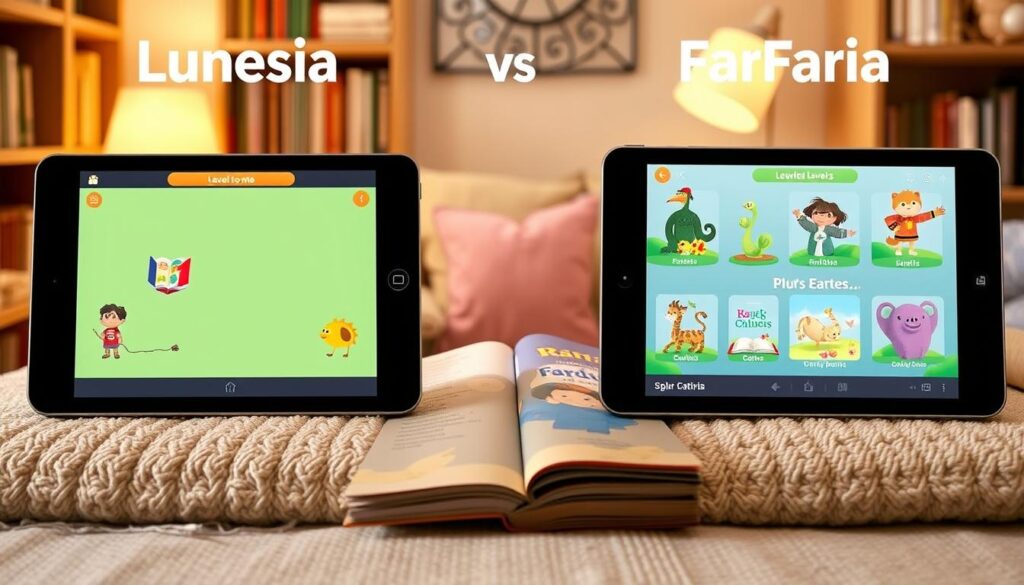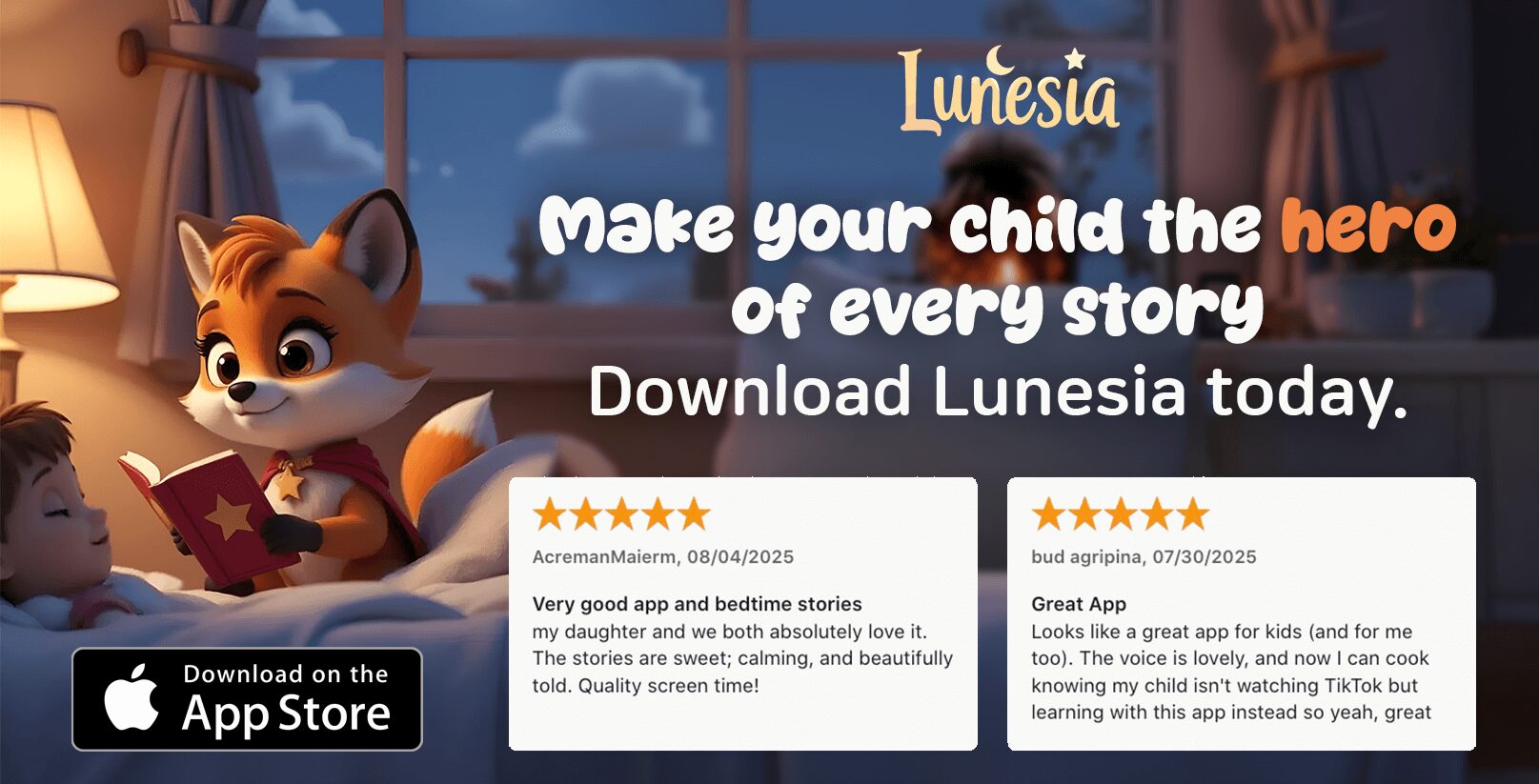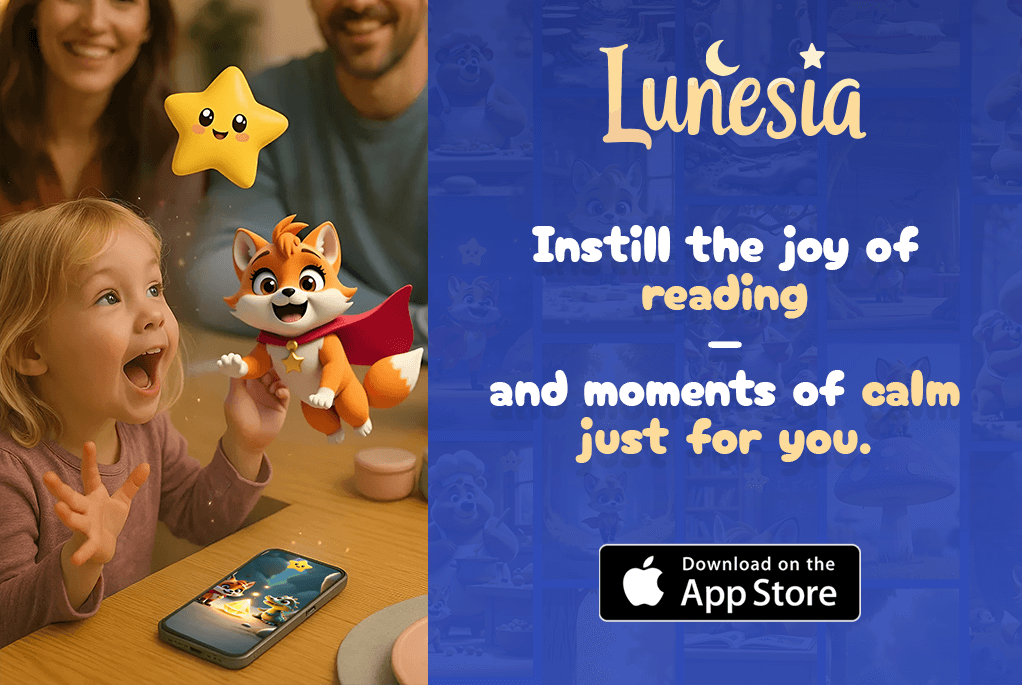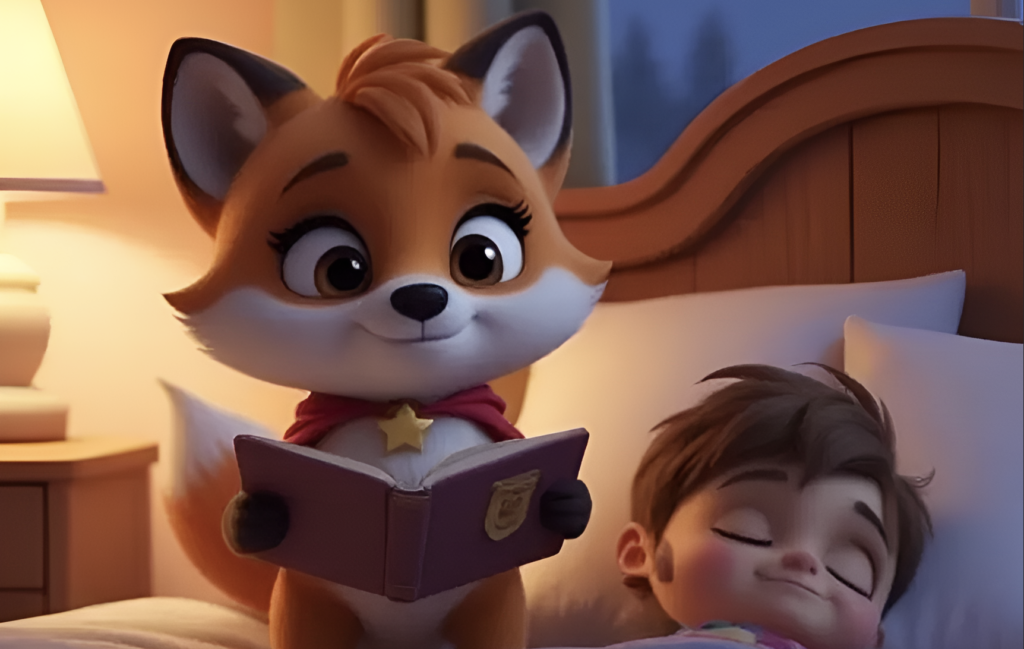As a parent, there’s nothing more exciting than watching your child develop a love for reading. With so many read-to-me story apps available, it can be overwhelming to choose the right one. Two popular options, Lunesia and FarFaria, offer high-quality content designed to engage children at different reading levels.
But what sets them apart, and which one is best for your child? In this article, we’ll dive into the world of read-to-me stories and compare these two popular apps. We’ll explore their approaches to storytelling and educational methodology, helping you make an informed decision about which app might be the best fit for your child’s needs.
One good story app can make a significant difference in a child’s reading journey and development. Let’s explore how Lunesia and FarFaria can help your child grow as a reader over time.
Understanding Lunesia and FarFaria
As we dive into the world of digital reading platforms for kids, it’s essential to understand what Lunesia and FarFaria have to offer. Both apps are designed to foster a love for reading in children, but they have distinct approaches and features.
What is Lunesia?
Lunesia is a digital reading platform that offers a unique way to engage children in the world of stories. With a lot of interactive games and a user-friendly interface, Lunesia makes reading a fun experience. It’s designed for kids, with a focus on developing their reading skills through an engaging system that rewards progress.

What is FarFaria?
FarFaria is another popular reading app that offers a vast library of stories for children. It’s part of a larger series of educational tools aimed at supporting children’s development. FarFaria’s approach is to provide a diverse range of stories that cater to different age groups and reading abilities, making it a versatile tool for parents and educators.
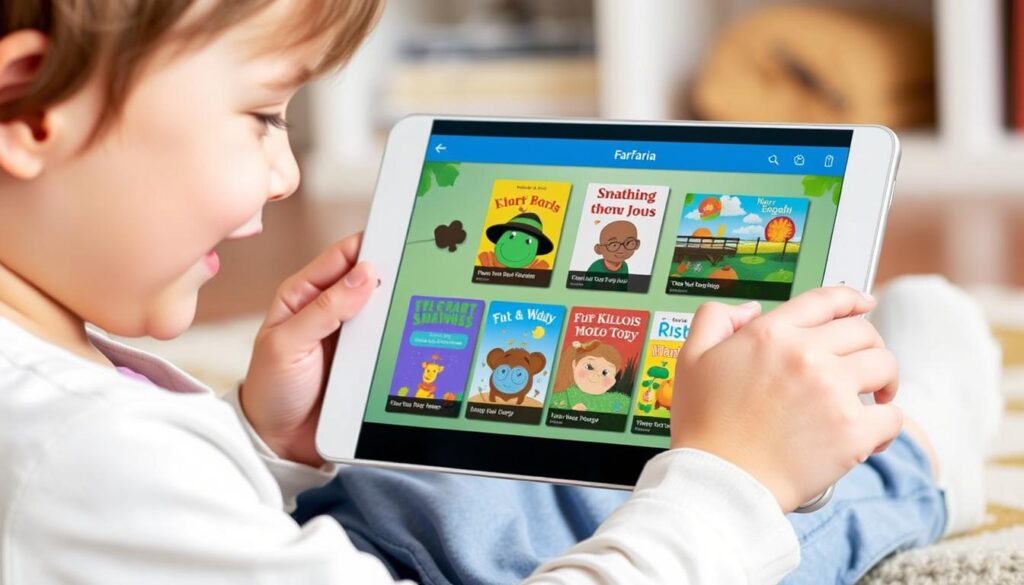
Both Lunesia and FarFaria are making significant contributions to the world of children’s literature by providing engaging and educational content. By understanding their unique features and approaches, parents can make informed decisions about which app is best for their child’s reading journey.
Content Library Comparison
The world of children’s reading apps is vast, but how do Lunesia and FarFaria stack up in terms of their content libraries? Both platforms offer a wide range of stories, but there are key differences in their approach to content curation.
Lunesia’s Story Collection
Lunesia boasts an impressive library of stories, with a diverse range of genres and topics that cater to different age groups. The platform regularly updates its content, ensuring that there’s always something new for children to look forward to. One of the standout features of Lunesia’s story collection is its ability to engage children through high-quality narratives and relatable characters. For instance, Lunesia offers a series of stories that take children on exciting adventures around the world, promoting cultural awareness and understanding. With a strong focus on educational value, Lunesia’s stories are designed to be both entertaining and informative. The quality of the stories is maintained through a rigorous review process, ensuring that every tale is not only engaging but also meets high standards of narrative structure and educational content.
FarFaria’s Story Selection
FarFaria, on the other hand, offers a unique approach to story curation, with a focus on creating a personalized reading experience for each child. The platform’s content library is vast, with a wide range of stories across various genres, including classic tales and original narratives. FarFaria’s stories are carefully selected to cater to different reading abilities and interests, ensuring that every child can find something that suits their taste. One of the key features of FarFaria’s story selection is its ability to adapt to different locations and settings, providing children with a rich and immersive reading experience. The platform also incorporates educational posts and supplementary content to enhance the reading experience, making it a valuable resource for parents seeking to support their child’s educational development. By maintaining a high level of quality control, FarFaria ensures that its content library remains a trusted and enjoyable resource for children.
Both Lunesia and FarFaria demonstrate a commitment to providing high-quality content, but their approaches differ in terms of curation and presentation. While Lunesia focuses on a broad range of genres and regular updates, FarFaria emphasizes personalization and adaptability. Ultimately, the choice between the two will depend on your child’s individual needs and preferences.
Reading Levels and Educational Value
As we explore the world of read-to-me stories, understanding how Lunesia and FarFaria cater to different reading abilities is crucial. Both platforms offer a unique approach to reading education, making it essential to compare their methods and benefits.
How Lunesia Adapts to Different Reading Abilities
Lunesia’s adaptive reading system is designed to accommodate children at various stages of reading development. From pre-readers to independent readers, Lunesia’s personalized approach ensures that each child is challenged appropriately. The platform uses a sophisticated algorithm to adjust the reading level based on a child’s performance, providing a tailored learning experience.
One of the key features of Lunesia is its ability to track progress over time, allowing parents to monitor their child’s growth. This tracking system not only helps in identifying areas where a child may need extra support but also in celebrating their achievements. By adapting to a child’s growing abilities, Lunesia keeps young readers engaged and motivated.
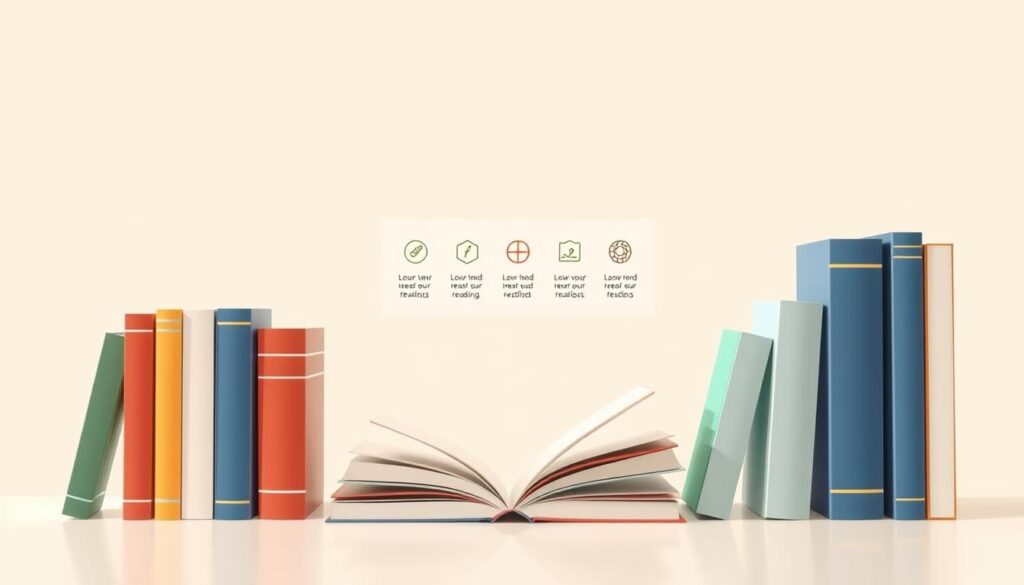
FarFaria’s Level System and Learning Benefits
FarFaria’s reading level system categorizes stories into different levels, making it easier for parents to find appropriate content for their child. This leveling system is based on established reading curricula and is designed to support vocabulary development, comprehension, and reading fluency. By offering a range of stories at various levels, FarFaria ensures that children can progress at their own pace.
The educational benefits of FarFaria’s approach are multifaceted. The platform not only supports reading skills but also fosters a love for stories and learning. With a diverse library of high-quality content, FarFaria provides children with the energy and enthusiasm for reading that can last a lifetime. By engaging with FarFaria’s stories, children develop important skills that contribute to their overall educational journey.
User Experience and Interface
The user interface of a reading app plays a crucial role in determining how much your child will enjoy reading. A well-designed interface can make a significant difference in keeping children engaged and motivated.
Navigating the Lunesia App
Lunesia’s app is designed with both parents and children in mind. The clean and intuitive interface makes it easy for kids to navigate through various stories and games. One of the standout features is the customizable reading experience, allowing children to adjust the font size and background color to their liking.
- Easy access to a wide range of stories
- Customizable reading settings for a personalized experience
- Engaging games that complement the stories
The app’s design ensures that children can independently explore the world of reading, while parents can easily track progress and manage account settings.
FarFaria’s Design and Usability
FarFaria also boasts a user-friendly interface, with a focus on creating an immersive reading experience. The app’s design is visually appealing, with a well-organized layout that makes it simple for children to find and enjoy their favorite stories.
- Intuitive navigation for children of various ages
- A engaging and interactive way to explore stories
- Parental controls that allow for easy management of the child’s reading experience
Both Lunesia and FarFaria understand the importance of a seamless user experience in a reading app. While Lunesia excels in providing a highly customizable reading experience, FarFaria stands out with its engaging and interactive storytelling. Ultimately, the choice between the two will depend on what matters most to you and your child.
Pricing and Subscription Options for Lunesia vs FarFaria
To make an informed decision, parents need to understand the pricing and subscription options of Lunesia and FarFaria. Both reading apps offer unique features and content, but their pricing structures can significantly impact your choice.
Lunesia’s Cost Structure
Lunesia offers a tiered pricing system to accommodate different family needs. The basic plan starts at $9.99 per month, providing access to a limited library of read-to-me stories. The premium plan, priced at $19.99 per month, unlocks the full library, including additional features like personalized storytelling and offline access. Lunesia also offers a one-time purchase option for lifetime access to their current content, priced at $299.99. This can be a cost-effective option for families who plan to use the app long-term.
Lunesia provides a 7-day free trial, allowing parents to test the app before committing to a subscription. They also offer educational discounts for schools and institutions, making it a viable option for educational settings.
Lunesia Pricing Summary:
| Plan | Price | Features |
|---|---|---|
| Basic | $9.99/month | Limited library access |
| Premium | $19.99/month | Full library, personalized storytelling, offline access |
| Lifetime | $299.99 | Lifetime access to current content |
FarFaria’s Pricing Plans
FarFaria also offers a tiered pricing system, with a focus on flexibility. Their monthly subscription is priced at $11.99, while an annual subscription costs $69.99, working out to $5.83 per month. FarFaria offers a family sharing plan, allowing up to six family members to share a single subscription. This can be particularly cost-effective for larger families.
FarFaria provides a 14-day free trial, giving parents more time to evaluate the app. They also offer a special “Parent-Child” plan for $14.99 per month, which includes additional features like parent-child reading statistics and more.
FarFaria Pricing Summary:
| Plan | Price | Features |
|---|---|---|
| Monthly | $11.99/month | Access to FarFaria library |
| Annual | $69.99/year | Access to FarFaria library, cost-effective |
| Parent-Child | $14.99/month | Includes reading statistics and more |
When comparing Lunesia and FarFaria, it’s essential to consider not just the cost but the value each app brings to your child’s reading journey. Both apps offer unique features and high-quality content, making them worthwhile investments in your child’s educational development.
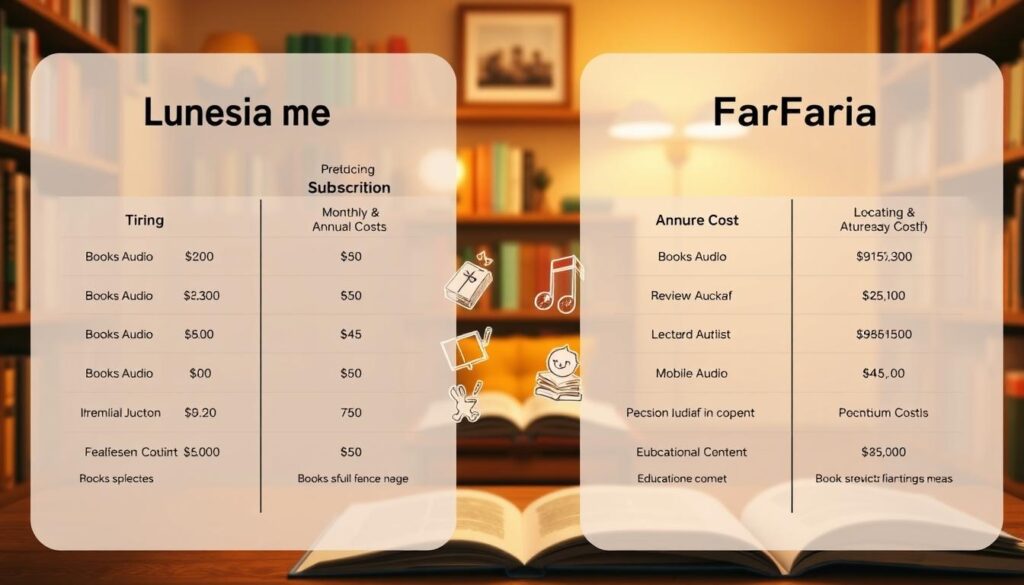
Which App Is Right for Your Child?
At this point, we’re not just comparing apps; we’re discussing a tool that can ignite a love for reading in children. As we conclude our comparison between Lunesia and FarFaria, it’s essential to consider which app is right for your child.
Both Lunesia and FarFaria offer unique features that cater to different needs. For instance, if your child loves puzzles and interactive elements, Lunesia might be the better choice, given its engaging games and interactive stories. On the other hand, if your child prefers straightforward storytelling, FarFaria’s extensive library could be more appealing.
When making your decision, consider your child’s age, reading level, and learning style. Think about your educational goals for your child – whether it’s building basic literacy or developing a deeper love of reading. You might also want to involve your child in the decision-making process by trying out both apps during their trial periods.
It’s also worth noting that both apps continue to evolve through updates, which can impact their long-term value. You can explore more educational apps for kids, like those featured on Lunesia’s creativity apps page, to complement their learning journey.
In the end, the right reading app can be a valuable tool in helping your child develop a lifelong love of reading. Regardless of which digital tool you choose, remember that reading with your child is what’s most important.
By choosing an app that fits your child’s unique needs, you’re taking a significant step towards fostering a positive relationship with reading that can last a lifetime.
FAQ
What are the main differences between Lunesia and FarFaria?
Both offer read-to-me stories, but they differ in their content library, reading levels, and user interface. I’ll help you understand these differences to make an informed decision.
Are the stories in Lunesia and FarFaria suitable for my child’s age?
Yes, both platforms cater to different age groups and reading abilities. Lunesia adapts to various reading levels, while FarFaria’s level system ensures a learning benefit for your child.
How do the battle systems in the games compare?
The battle systems are quite different, with one being more energy-based. I’ll break down the specifics so you can understand which might be more engaging for your child.
Can I try before I buy?
Many parents want to test the waters before committing. Both Lunesia and FarFaria offer ways to experience their content before purchasing a subscription.
Are there any educational benefits to using these apps?
Absolutely! Both platforms are designed with educational value in mind, helping your child develop reading skills and more.
How do I navigate the apps, and which is more user-friendly?
I’ll walk you through the user experience of both Lunesia and FarFaria, highlighting their design and usability features.
What’s the pricing like, and are there different plans?
Both apps offer various pricing plans to fit different budgets. I’ll outline the costs and options available for you to consider.
Can I use these apps on multiple devices?
Yes, many parents want to access these apps across several devices. I’ll explain the compatibility and accessibility of both Lunesia and FarFaria.
